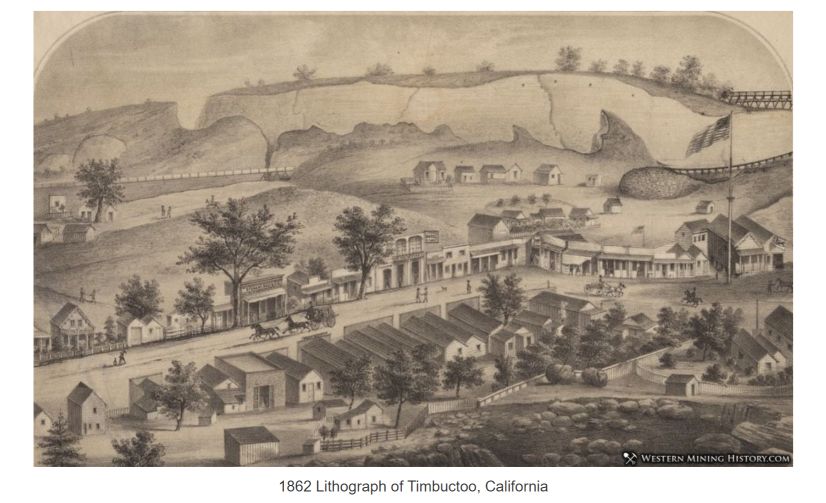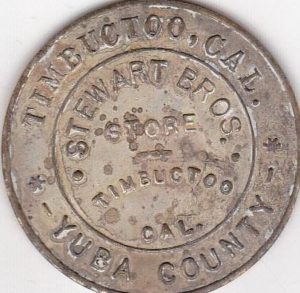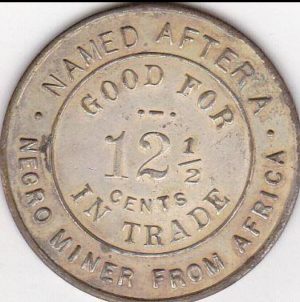 |
 |
| Timbuctoo Marker | Lithograph of Timbuctoo, California |
 |
 |
| Coins Photo: http://tokencatalog.com/ | |
Location: Yuba County, California
“Established in 1855—during the California Gold Rush—Timbuctoo was the largest town in eastern Yuba County. Thriving during the era of hydraulic mining, this Sierra Nevada town of 1,200 pioneers contained a church, a theater, stores, hotels, saloons, a Wells Fargo office, and the Stewart Brothers store. The town of Timbuctoo got its name from a nearby ravine that was used for hydraulic mining as early as 1850; the ravine was named Timbuctoo after an African American who was one of the first miners of the area. Extensive hydraulic mining tailings remain throughout the region as evidence of its lively pioneer past. Today, very little remains of Timbuctoo. Most of its buildings have long been destroyed by fire. The old Wells Fargo & Stewart Brothers store is the only building left standing…..” Sierra Nevada Tourism (6/25/16)
“Settled in 1855, Tumbuctoo thrived as a center of hydraulic gold mining, and became the largest largest town in eastern Yuba County. The town is said to have been named after and African American miner who claimed to be from Timbuktu in Mali, Africa.”. https://westernmininghistory.com/
“Hydraulic mining, use of a powerful jet of water to dislodge minerals present in unconsolidated material, including mine tailings, placer deposits, alluvium, laterites (soil rich in iron oxides), and saprolites (soil rich in clay). ” Encyclopedia Britannica.
Resources
Hustrulid, William Andrew. “Hydraulic Mining.” Encyclopedia Britannica. 3/20/16 Accessed 10/2/2020.
“Timbuctoo (No. 320 California Historical Landmark).” Sierra Nevada GeoTourism. https://sierranevadageotourism.org/ Accessed 10/2/2020.
“Timbuctoo, California.” Western Mining History. https://westernmininghistory.com/towns/california/timbuctoo/ Accessed 10/1/2020.
